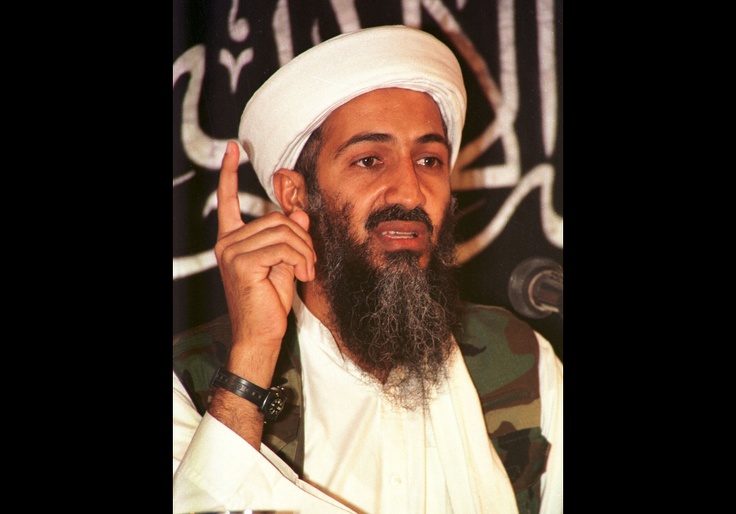"Bin Laden? Why are you reading that?" asked the proprietor of an Israeli bodega just off the Tel Aviv beach. I was buying a bottle of water, but the shop was full of multicolored flags, thongs, and glitter. The pride parade had just ended. The man took my money, looked at me, and then my book again. He shrugged.
I left the shop chuckling. If only Osama bin Laden knew. He was obsessed with the destruction of both Israel and the United States. Israel was certainly getting the last laugh. And America, after assassinating him on May 2, 2011, in Abbottabad, Pakistan, seemed to have gotten the last word.
But America, I realized while reading this book, was fulfilling bin Laden's lifelong dream. He had attacked the United States repeatedly to drive it out of the Middle East. Now, a decade after his demise at the hands of Navy SEALs at a secret compound that required a decade for the CIA to find, America was leaving Afghanistan—where bin Laden had hatched his plot to attack America on September 11, 2001. Worse still, the Biden White House was preparing to draw down in other key jurisdictions across the region.
America is quitting the Middle East. On this score, bin Laden had posthumously won.
When I first heard that Peter Bergen had written yet another book about bin Laden, I admit to having emitted an audible groan. The first Western journalist to have interviewed the world's most famous terrorist had already written Holy War, Inc. (2001), The Osama bin Laden I Know (2006), The Longest War (2011), Manhunt (2012), and still other books that analyzed the al Qaeda leader and his war against the West. The cynic in me viewed his latest work as a "cigar butt" book—the last puff of an enjoyable smoke that lasts some two decades.
Perhaps it was. But Bergen was probably still the right man to author this book. I cannot think of any journalist who spent more time chasing this story. And to his full credit, Bergen understood it was a story long before most of the others in his field.
The Rise and Fall of Osama bin Laden is well written. Its prose is crisp and clean. Its style will appeal to specialists and non-specialists alike. The author draws from a wide range of sources to provide a fast-moving biography. Those sources include primary source documents, as well as interviews with intelligence officers and White House officials who were directly involved in the effort to find and kill the man who brazenly declared war on America. The result is an enjoyable and informative read, spanning bin Laden's childhood to the moment that the raid commander famously reported back to Washington over radio, "Geronimo, EKIA [enemy killed in action]."
While much of this book covers well-worn ground (bin Laden did not suffer from a lack of media coverage), there is something compelling about the book's sense of finality. Bergen conveys, without saying so explicitly, that this is his bin Laden swan song.
This is not to say that Bergen's account is entirely accurate. Glaringly, his depiction of al Qaeda's relationship with the Islamic Republic of Iran strays significantly from reality. The author conveys the mistaken notion that al Qaeda figures were being detained by the regime. Multiple U.S. Treasury terrorism sanctions designations over two decades tell a different story. The regime in Iran has granted a large number of senior al Qaeda figures permission to operate freely there, in common cause against their mutual enemies. This was reinforced just last summer, with the Israeli assassination (greenlit from Washington) of Abdullah Ahmed Abdullah, also known as Abu Muhammed al-Masri, on the streets of Tehran. Abdullah was a founding member of al Qaeda, and he was widely believed to be first in line to succeed Ayman al-Zawahiri, the Egyptian doctor who now leads the terror network.
Admittedly, sectarian and tactical tensions exist between the world's foremost state sponsor of terrorism and the terrorist group that sought refuge in its borders. But the relationship is far more symbiotic than Bergen allows.
It was further interesting to note that Bergen, in this book, conveyed correctly that bin Laden's network retained its potency even after his death. He cedes that bin Laden's ideas "lingered on among al Qaeda's affiliates." This has contributed to the network's staying power. If anything, the group has grown since bin Laden's demise. Yet, in the aftermath of bin Laden's death, Bergen was a prominent voice among a gaggle of terrorism analysts in Washington echoing the Obama administration's errant assertion that al Qaeda was "decimated."
Bergen has obviously thought better of this—a sign that he grasps the danger that al Qaeda still poses. The terrorist group is currently poised to further expand its reach and influence, now that America is retreating from the Middle East. Bergen has recently given voice to the dire consequences of such a move.
If the United States government does not heed this warning, Bergen may yet have reason to write another book, this time on the "fall and rise" of al Qaeda or other jihadist groups in the region.
The Rise and Fall of Osama Bin Laden
by Peter Bergen
Simon & Schuster, 416 pp., $30
Jonathan Schanzer, a former terrorism finance analyst at the United States Department of the Treasury, is senior vice president for research at the nonpartisan think tank Foundation for Defense of Democracies.
